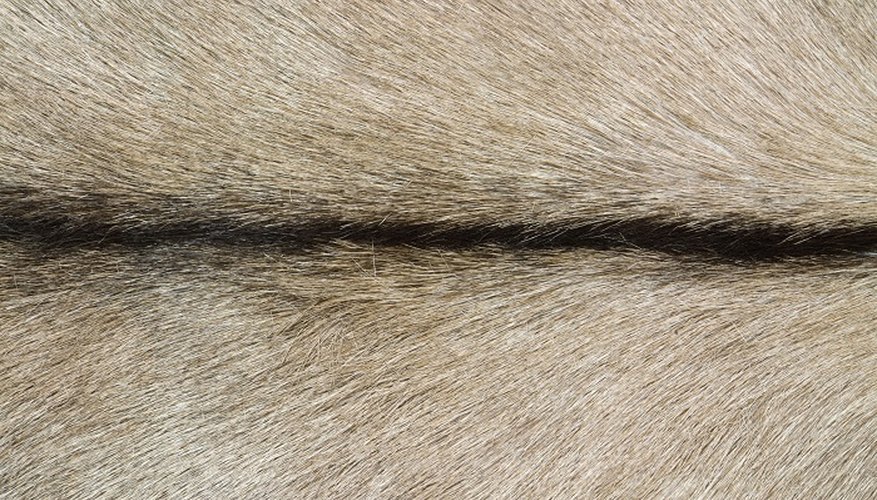The skin of goats is cured and tanned to make an inexpensive and durable leather that is useful for gloves, hats and other leather goods. Dust and dirt can quickly be removed from the surface of goatskin with a common household cleaner, but you'll need to take care not to damage the delicate balance of oils in the skin. Cleaned goatskin has a lighter colour and better displays the texture of the leather grain.
- The skin of goats is cured and tanned to make an inexpensive and durable leather that is useful for gloves, hats and other leather goods.
- Dust and dirt can quickly be removed from the surface of goatskin with a common household cleaner, but you'll need to take care not to damage the delicate balance of oils in the skin.
Mix equal parts pf vinegar and linseed oil in a small dish.
Dip a corner of a lint-free cloth into the cleaning solution. Rub gently on the goatskin in a tight circular motion with the wet corner of the cloth.
Dampen a new, clean section of the cloth each time the previous corner dries out. Continue until all the goatskin has been evenly coated in the vinegar and linseed oil mixture. Wait for 30 minutes.
Polish the goatskin leather with a new clean cloth. Rub gently with a fast circular motion until the leather surface appears less dull and more light reflective.
TIP
Add leather conditioner to the surface of the goatskin if you can still a white haze after polishing. Follow the manufacturer's recommendations for application closely.
